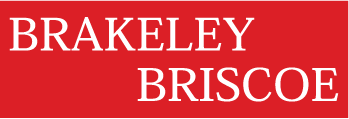Prospect Portfolios: Getting Donors in the Major Gift Pipeline
June T Poust
Many large fundraising programs have well developed prospect portfolio management systems and a substantial major donor list. The rest of us aren’t all so advanced. What are portfolios and why do we need them, too?
Portfolios are a way to organize your institution’s donors and prospects to ensure that everyone—at every level of gift—is being managed by a staff member and moved up the spectrum of giving. If you don’t have any designated major gift fundraisers, then you need to identify one or two senior staff who will each be responsible for managing a portfolio of prospects. Without this, you are probably working hard on your annual fund, but not upgrading the most promising of these donors into major givers. As a result, your major gifts program could be working the same prospects every year and not adding very many new ones.
What is a major gift?
This is a definition you determine for your organization. One way to do this: list your highest single gift donors. Scan down the list until you reach twice or three times the number of donors you can assign to portfolios at any one time. Consider whether that is a realistic minimum level for a “major gift” and adjust the level accordingly. For some organizations “major” can be as little as $1,000; but be sure you set a level that warrants the personal attention a portfolio system gives each prospect.
Typically, a full time major gift officer has a portfolio of 75 to 125 prospects. People with other assignments besides major gifts should be assigned smaller portfolios. Major gift officers with very high value prospects/donors requiring a lot of attention will have smaller portfolios.
The prospects in any one portfolio are drawn from four roughly equal groups:
- Donors in stewardship—those who have recently made a major gift and should not be forgotten. This can also include planned gift donors.
- Prospects to be solicited in the next 12 to 18 months for whom you are actively devising strategies.
- Prospects in cultivation—those who have substantial gift capacity but are not currently ready for major gift solicitations.
- Prospects in acquisition or discovery. These are usually lower level donors you want to turn into major donors.
The idea is to keep prospects flowing in and out of focused prospect management. Prospects put into a gift portfolio should already be qualified to be in there either by gift capacity or past giving to the institution.
The portfolio manager’s job is to move prospects from entry level to stewardship level (meaning they have made a major gift) in a finite period of time…typically 18 to 24 months. You want to hold regular staff prospect review meetings to monitor this progress and to determine which prospects cannot be moved to the next level in the portfolio at this time and to replace them with new prospects. In this way you maintain a steady flow of prospects and keep focused on raising their sights and funds for your programs.
Team Captains
Think of portfolio managers (PM) as ‘team captains’. It is their responsibility to oversee all aspects of the cultivation, stewardship and solicitation. The team for any one prospect may consist of different individuals (staff and volunteers) as the prospect’s relationship is developed. This means that major contacts with the prospect are reported to the PM and the PM manages the timing and substance of solicitations. To put it one way, the PM makes sure the ask gets made, but does not necessarily do it him/herself. For lower capacity major gift prospects, especially when they are at the qualification stage in a portfolio, the PM often makes the calls or other moves him/herself. For higher capacity prospects the PM may manage the work of the CEO/President, senior fundraising volunteers, program staff or faculty. Often the chief development officer or a very senior major gifts officer serves as PM for the President’s portfolio.
In larger organizations where several programs or schools may have interest in a particular prospect, it’s the PM’s job to direct traffic. The PM assures that, from the prospect’s viewpoint, you are all one organization working together for the good of both the donor and the organization. Most important, you want to ensure that several people aren’t asking the prospect at the same time!
Prospect Information and Research
Making a portfolio system work depends on a strong prospect information management and research system. You need research to help assign prospects to particular portfolios and to set appropriate gift targets for each portfolio cycle; you need your data systems (and your PMs) to keep your prospect/donor information system current so you can evaluate the pace of moves and movement toward the target gift. And you need to keep refreshing your portfolios with new prospects as some of the assigned ones need to be dropped or parked for a time.
This is how you convert an annual donor, typically giving through direct response methods (mail, phone, web), to a major donor. You can’t give every one of those donors personal treatment, but with a portfolio system you can give your major gift fundraisers (and your president and senior volunteer fundraisers) some tools and metrics to determine where you want to get and how far along you are toward your goals.
